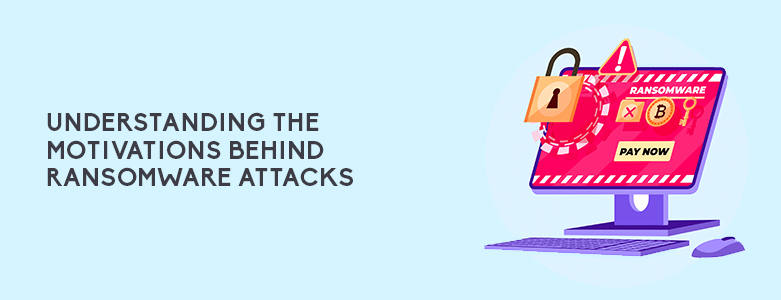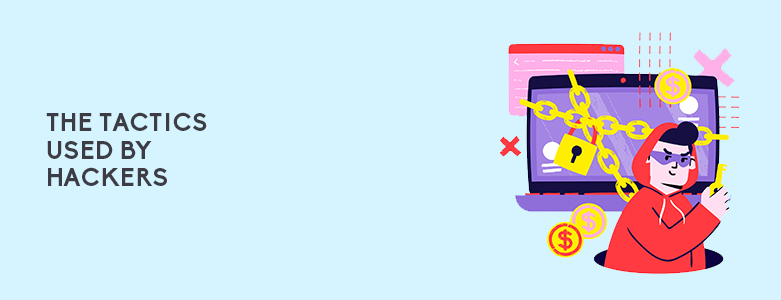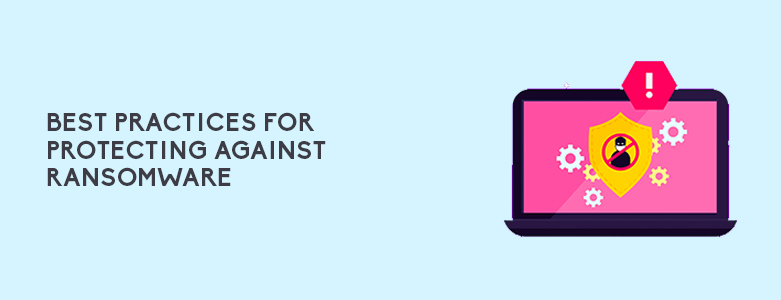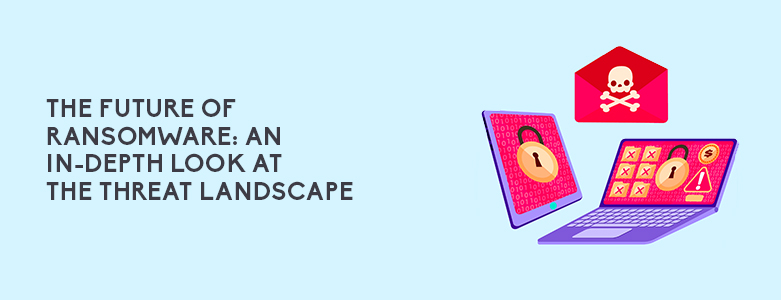The future of ransomware is a constantly evolving as the IT landscape grows increasingly more complex. New threats and attack methods are constantly cropping up giving no time for businesses to catchup. The proliferation of ransomware attacks in recent years has had a significant impact on organizations regardless of their size, enterprise or SMB. Some paying millions of dollars in ransom demands in order to regain access to their critical data.
Through this article, you will get in-depth look at the current state of ransomware, what is expected come, and how to defend your business. This includes the motivations behind ransomware attacks, the tactics used by hackers, and the best practices for protecting against them.
Understanding the Motivations Behind Ransomware Attacks

At its core, ransomware is a type of cyber attack in which the attacker encrypts a victim’s files and demands payment in exchange for the decryption key. In many cases, the primary motivation behind these attacks is financial gain, with hackers seeking to extract as much money as possible from their victims. It also should be noted, there is also no guarantee that once the ransom is paid, that the attackers will give your organization the decryption key.
There are other motivations behind ransomware attacks as well. Ransomware can also be used for political and ideological motivations, as well as to disrupt and damage a target organization when considering rival businesses.
The Tactics Used by Hackers

Although there are many different attacks being developed year on year, they are usually improvements to already very successful methods. Some of these tactics are very well established however, the approaches have become more sophisticated and harder to spot. Below are the most common of these methods that have grown throughout the years and what businesses should look out for:
Phishing emails: Hackers often use phishing emails to gain access to an organization’s network and spread the ransomware. Every year it is harder to stop all phishing emails due to the many different evasion methods that have been developed over the years.
Exploits: Hackers may also take advantage of vulnerabilities in software and systems to gain access to a target network and install the ransomware. This is even more so when zero-day threats are announced, its even worse when advisories to these vulnerabilities are too late to stop attacks.
Social engineering: In some cases, hackers may use social engineering tactics such as phone calls or in-person visits to gain access to an organization’s network. Advancement in AI technology has made this even more convincing as conversations generated by AI programs sound more convincing as time goes by.
Best Practices for Protecting Against Ransomware

Given the increasing threat posed by ransomware attacks, it is critical for organizations to take steps to protect themselves. Some of the best practices for protecting against ransomware include:
Regular backups: Regular backups of critical data can help to minimize the impact of a ransomware attack by allowing organizations to quickly recover their data without paying a ransom. Backup solutions such as Datto help businesses recover data quickly with its Managed Services focused data recovery.
Cybersecurity awareness training: Employees can be a major weakness in an organization’s security posture, and cybersecurity awareness training can help to reduce the risk of successful attacks.
Keep software and systems up to date: Regularly applying software updates and patches can help to close vulnerabilities that could be exploited by attackers. However, we know that there are times where not all businesses have the luxury to update live servers. This is where security solutions like Trend Micro can help. With its Virtual patching, you business can put a safety measure against exploits trying to use security vulnerabilities to get into your network. Giving you more time to plan when you can implement the latest patch.
Implement multi-factor authentication: Multifactor authentication can add an extra layer of security to an organization’s systems, making it more difficult for attackers to gain access. RSA’s MFA solutions can help stop bad actors from using stolen credentials from getting into your network legitimately through its use of various authentication methods.
Use anti-virus software: Anti-virus software can help to detect and prevent ransomware infections, as well as other types of malware.
The future of ransomware is a constantly evolving threat landscape, and organizations must take steps to protect themselves against these attacks. By following best practices such as regular backups, cybersecurity awareness training, and keeping software and systems up-to-date, organizations can minimize the risk of a successful ransomware attack.
To learn more about ransomware attacks and security solutions for them, you may contact us at marketing@ctlink.com.ph and we would be happy to schedule a meeting with you!


One Response